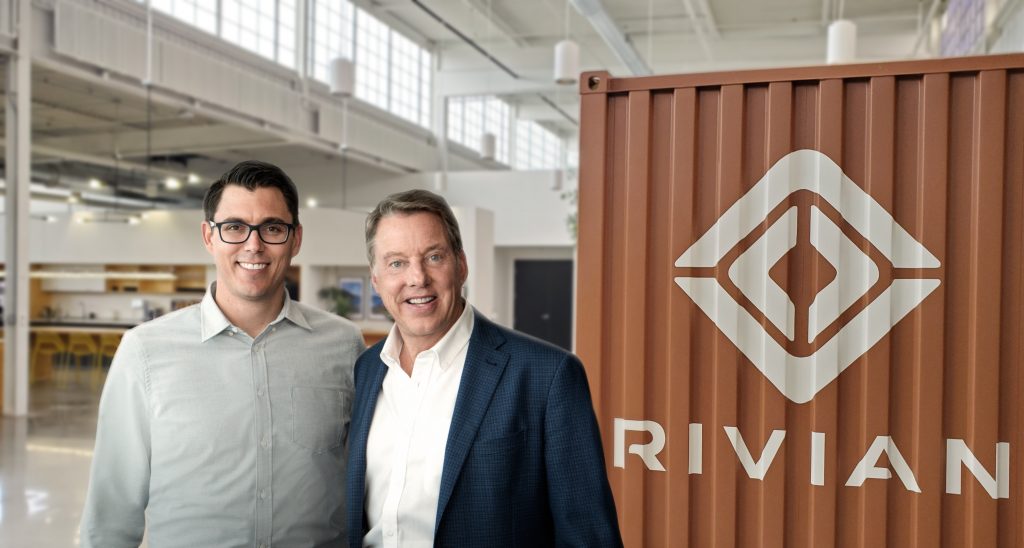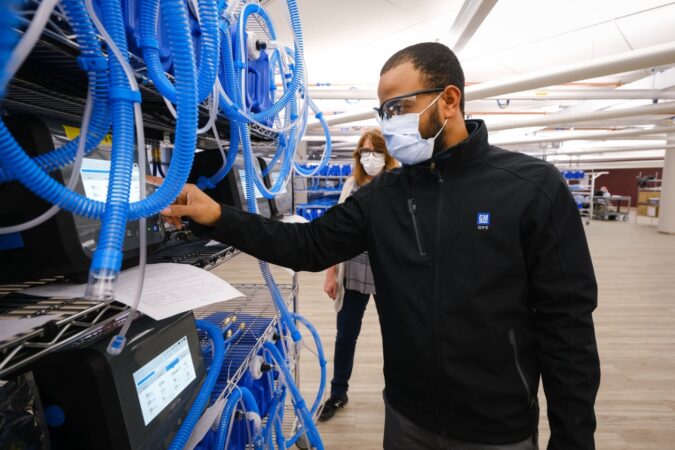U.S. new car sales took a spectacular fall last month, tumbling to levels even lower than were seen during the Great Recession a decade ago. And with no clear sense of what the coming months will look like industry losses could run well above $10 billion for the first half of the year.
With even major manufacturers like Detroit’s General Motors and Ford struggling to shore up their balance sheets, some observers fear the pandemic could deliver a fatal blow to some of the industry’s weaker players.
The question, said Joe Phillippi, head of AutoTrends Consulting, is not just how the industry pulls through the pandemic, it’s what happens “on the other side.” But despite the current sense of dread, there could be at least a small silver lining.
Despite a drop of about 50%, April sales actually weren’t nearly as bad as some originally had forecast, early estimates by J.D. Power anticipating a dip of as much as 80% compared to year-earlier numbers. And there were surprising signs of what J.D. Power analyst Tyson Jominy described as a nascent “recovery” in recent weeks.
Several factors appear to be working in the industry’s favor. First, there are the record incentives manufacturers have rolled out, averaging over $4,000 a vehicle last month and running as high as $7,300 on full-size pickups, according to industry data.
Then there’s the move by U.S. dealers to adopt online and contactless sales, a desperate shift that threatens to open the market up to even more radical change going forward.
Virtually every aspect of the automotive business – indeed, the transportation sector as a whole – is likely to be permanently changed, according to industry researchers.
MANUFACTURING
Virtually the entire North American automotive manufacturing network shut down in mid-March as the outbreak of COVID-19 raced across the continent. The question is when will things get back to normal? As they now stand we can expect to start seeing plants in the U.S. begin ramping back up by mid to late-May, though the exact timing likely will depend upon when various states end their shelter-in-place orders. With Michigan’s currently set to expire on May 28, GM, Ford, and Fiat Chrysler likely won’t reopen until then.
And what happens at that point will reflect what might be called “the new norm.” In a rare move, most automakers have been talking to one another, hoping to come up with a best-practices strategy to keep workers safe. Ford gave a look at its “playbook” last week and it means staggered start times, the use of personal protection equipment, and modifications along the assembly line to create social distancing, wherever possible.
Even then, “There’s a really good chance we’ll have a positive case again,” said Sean Suggs, president of Toyota’s big assembly plant in Mississippi, which is following guidelines hewing close to Ford’s.
Expect production to ramp up slowly, with an emphasis on vehicles still showing strength in the current market, notably pickups and midsize and large SUVs.
SALES
“People have lost their jobs or fear losing their jobs and they’re certainly not going to spend money on large-scale purchases like an automobile,” said Phillippi.
How soon the market recovers is far from certain. J.D. Power data suggest the U.S. will remain in the current trough until at least early summer, and how quickly it bounces back will depend upon whether the country experiences any additional outbreaks of COVID-19. At best, the research firm anticipates, 2020 will see a drop of about 2.5 million vehicles from the 17.1 million cars, trucks, and crossovers sold in 2019. At worst, the market could plunge to just 12.7 million, its weakest performance in a decade.
Meanwhile, LMC Automotive, another closely followed research firm, foresees at least a 20% decline in global auto sales, dropping to around 70 million for the year. The general consensus is that a real recovery could be a year away.
RETAILING

VEHICLE SHOPPING MOVES TO ONLINE
Until the advent of the coronavirus pandemic, most U.S. dealers had fought against online sales, worrying that would open the door to the same sort of revolution that has hammered other retail sectors. Don’t expect to see traditional new car showrooms vanish, according to J.D. Power and other experts, but online sales are here to stay and will likely grab a growing share of the market, especially among digitally savvy younger buyers.
“It has been breathtaking for me to see how fast that has happened,” Jim Farley, Ford’s chief operating officer, said during a media webinar.
What the emergence of online retailing means is anything but certain. Over the past two decades, the classic, family-owned dealer has become an increasingly endangered species, mega-chains like AutoNation increasingly dominating sales. These publicly traded companies hope to ride the transition but could find themselves facing new web-savvy entrants, perhaps even Amazon, the online retail world’s 800-pound gorilla.
ALTERNATIVE TRANSPORTATION

LYFT. PHOTO BY THOUGHT CATALOG FROM PEXELS
Going into the pandemic it looked to many like the traditional automotive model could be breaking down. Use of mass transit was on the rise and it had become conventional wisdom that millions of Americans would abandon private vehicle ownership in favor of ride-sharing services like Uber and Lyft.
The pandemic has turned things upside down. In a new study of how the pandemic will impact consumer behavior in the U.S., IBM found, “more than 20 percent of respondents who regularly used buses, subways or trains now said they no longer would, and another 28 percent said they likely will use public transportation less often.”
A global study by Capgemini found 43% of the 11,000 survey respondents saying they plan to use ride-hailing services less often “owing to health and safety concerns.”
That could deliver a critical blow to ride-share giants like Uber and Lyft. Both were bleeding cash even before the pandemic hit. Lyft late last month announced 1,000 layoffs, Uber expected to soon follow.
The IBM and Capgemini studies offer a glimmer of hope to automakers, finding many of those worried about using mass transit and ride-hailing services now planning to buy new vehicles in the near future.
PRODUCT PROGRAM DELAYS

RJ SCARINGE, RIVIAN FOUNDER AND CEO, AND FORD EXECUTIVE CHAIRMAN BILL FORD ANNOUNCE A $500 MILLION FORD INVESTMENT IN RIVIAN IN 2019. THROUGH A STRATEGIC PARTNERSHIP, FORD WILL DEVELOP AN ALL-NEW, NEXT-GENERATION BATTERY ELECTRIC VEHICLE FOR FORD’S GROWING EV PORTFOLIO USING RIVIAN’S SKATEBOARD PLATFORM.
Late last month, Ford announced it was scuttling plans to build a new, all-electric SUV as part of a joint venture with suburban Detroit-based start-up Rivian. In a leaked document, GM officials advised staff that a number of its programs would be delayed.
That should be no surprise considering the months of development work lost during the near-nationwide lockdown. To that add the fact that automakers are struggling to shore up their balance sheets and are likely to shift available cash to the product programs most likely to bring a quick payoff, said Jominy.
The most vulnerable product programs, he emphasized, will be battery and autonomous vehicles, technologies likely to generate little to no profits until mid-decade. That said, Tesla CEO Elon Musk last week revealed his company is actually amping up investments, hoping to take advantage of any pause by its competitors.
As is often the case with conventional wisdom, how things actually do shake out in the next 12 to 18 months, never mind by mid-decade, could change radically, at least in part depending upon the course the pandemic ultimately takes. But one thing seems certain: almost everything about the automotive and transportation world will undergo change, some of it quite radical.






















No comments
Sorry, the comment form is closed at this time.